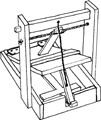Vertebrate Pest Conference Proceedings collection
Date of this Version
March 1992
Document Type
Article
Abstract
We reviewed the historical and current status of the American crow (Corvus brachyrhynchos), urban crow roosts and control efforts in California. Crows aggregate in traditional winter roosting areas. In the late 1930s most crows in California roosted in the Sacramento Valley in rural locations. Crow roosts were not a concern except for potential damage to adjacent farmlands. From the 1960s through 1980s crows colonized urban areas for nesting and winter roosting. A phone survey of vertebrate pest management officials indicated all known roosts were in urban areas, with most occurring in the Sacramento Valley. From 1970 to 1989 the winter crow population in the Central Valley of California doubled, with more crows found in the Sacramento Valley than the San Joaquin Valley. In the late 1980s crows in a traditional roost area in Yuba City, Sutter County, increased to 1 million birds. Political pressure prevented attempts at population reduction in 1991 and 1992 and led to examination of non-lethal techniques to disperse crows from urban roosts. Methods and materials tested included mylar tape, strobe lights, netting, monofilament lines, eyespot balloons, pyrotechnic devices, water-misters, sticky repellents, and taped crow and owl vocalizations. Qualitative evaluations by residents and local officials indicated strips of mylar tape tied on branch tips and pyrotechnic devices were relatively effective in dispersing crows.

